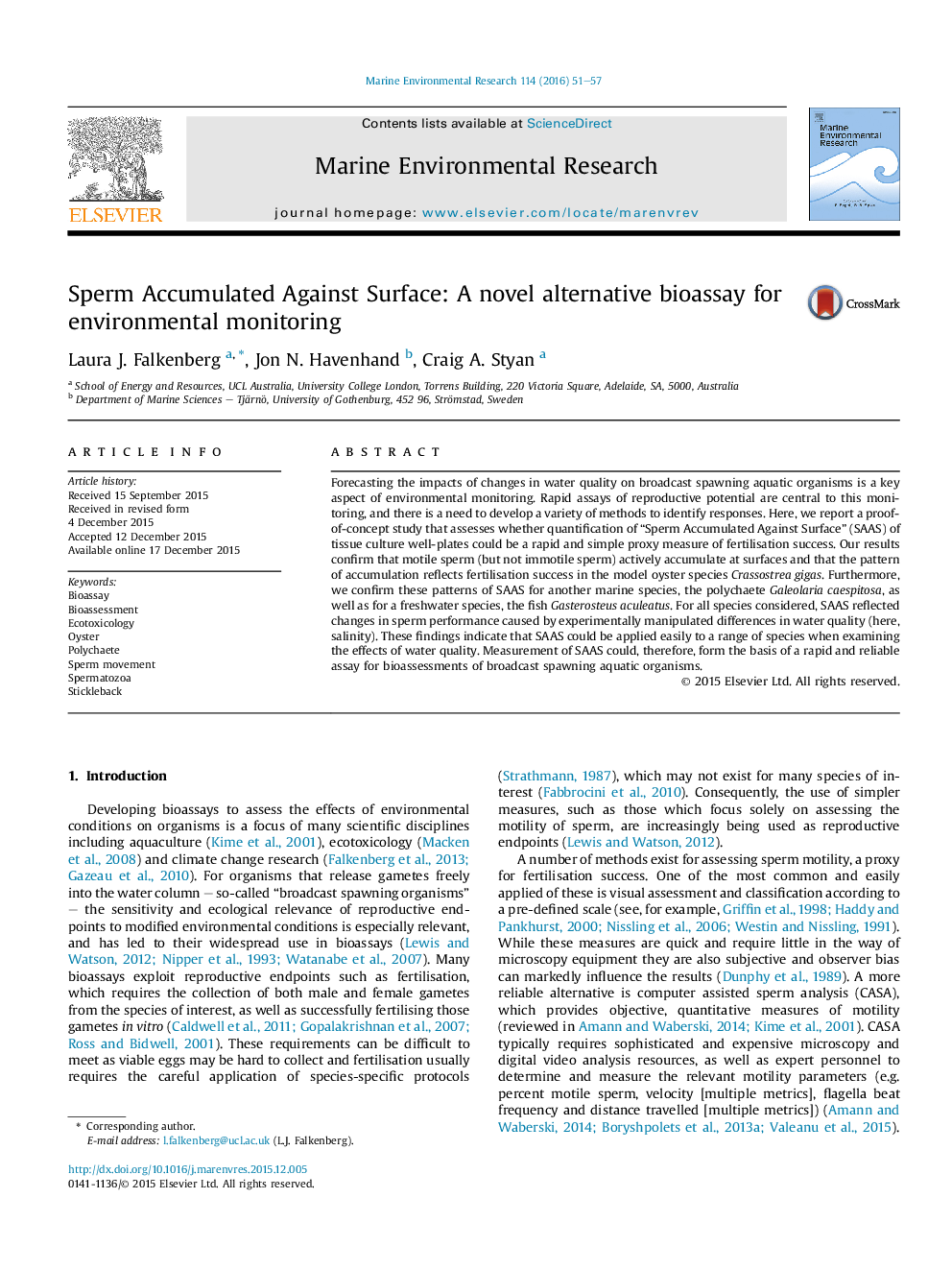| Article ID | Journal | Published Year | Pages | File Type |
|---|---|---|---|---|
| 4550657 | Marine Environmental Research | 2016 | 7 Pages |
•Rapid assays considering reproductive potential central to environmental monitoring.•Quantification of Sperm Accumulated Against Surface (SAAS) could be a new assay.•Motile sperm do accumulate at surfaces, while immotile sperm do not.•Measured SAAS is related to fertilisation success and salinity.•SAAS quantifiable in a range of species: marine oyster, polychaete; euryhaline fish.
Forecasting the impacts of changes in water quality on broadcast spawning aquatic organisms is a key aspect of environmental monitoring. Rapid assays of reproductive potential are central to this monitoring, and there is a need to develop a variety of methods to identify responses. Here, we report a proof-of-concept study that assesses whether quantification of “Sperm Accumulated Against Surface” (SAAS) of tissue culture well-plates could be a rapid and simple proxy measure of fertilisation success. Our results confirm that motile sperm (but not immotile sperm) actively accumulate at surfaces and that the pattern of accumulation reflects fertilisation success in the model oyster species Crassostrea gigas. Furthermore, we confirm these patterns of SAAS for another marine species, the polychaete Galeolaria caespitosa, as well as for a freshwater species, the fish Gasterosteus aculeatus. For all species considered, SAAS reflected changes in sperm performance caused by experimentally manipulated differences in water quality (here, salinity). These findings indicate that SAAS could be applied easily to a range of species when examining the effects of water quality. Measurement of SAAS could, therefore, form the basis of a rapid and reliable assay for bioassessments of broadcast spawning aquatic organisms.
